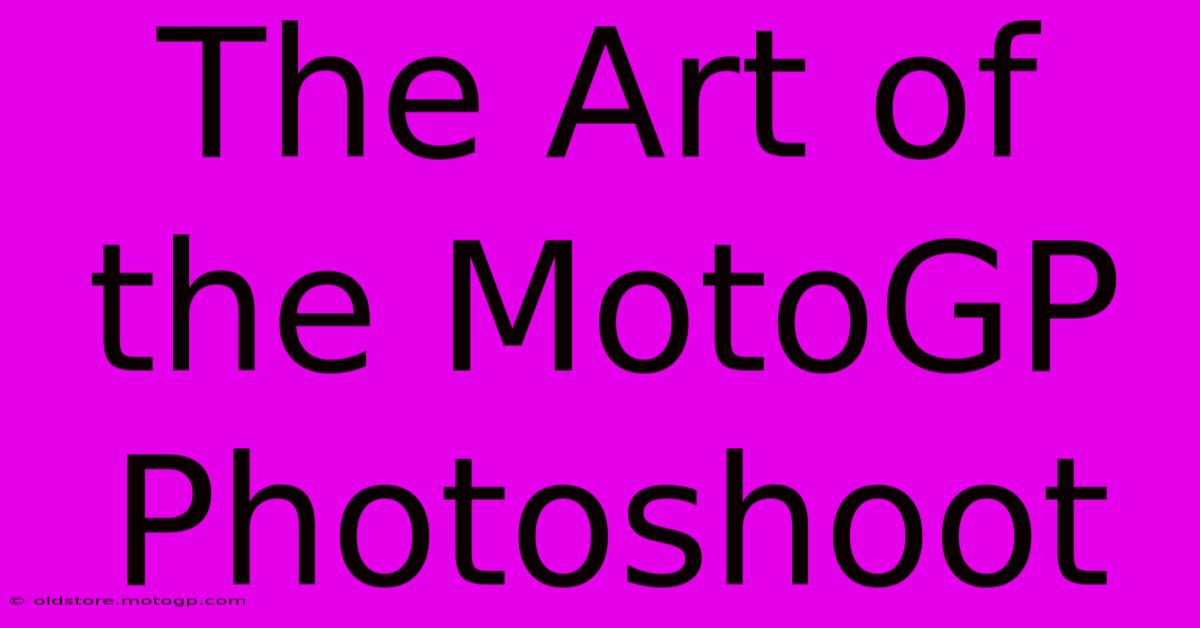The Art Of The MotoGP Photoshoot

Table of Contents
The Art of the MotoGP Photoshoot: Capturing Speed, Style, and Emotion
MotoGP. The roar of the engines, the blur of speed, the breathtaking skill of the riders. It's a spectacle that demands to be captured, and that's where the art of the MotoGP photoshoot comes in. More than just pointing a camera and shooting, a successful MotoGP photoshoot requires a blend of technical expertise, creative vision, and an understanding of the sport itself. This article dives deep into the techniques and considerations that go into creating truly stunning MotoGP imagery.
The Challenges of Capturing Speed
One of the biggest hurdles in MotoGP photography is capturing the sheer speed of the bikes. These machines aren't just fast; they're incredibly fast, often exceeding 200 mph (320 km/h). This necessitates specialized equipment and techniques:
-
High-speed cameras: Cameras capable of shooting at incredibly high frame rates (fps) are essential. This allows photographers to freeze the action, capturing details that would be blurred at lower speeds. Think upwards of 10 frames per second, even more for extreme close-ups.
-
Fast shutter speeds: Complementing high frame rates, incredibly fast shutter speeds are crucial to freeze the motion of the bikes and riders. Shutter speeds of 1/2000th of a second or faster are commonplace.
-
Sharp lenses: High-quality lenses with excellent sharpness are vital for capturing crisp, clear images, even at high shutter speeds. Telephoto lenses are a must, allowing photographers to get close-up shots from a safe distance.
Beyond the Technical: Composition and Storytelling
While technical proficiency is crucial, it’s only half the battle. A truly compelling MotoGP photoshoot tells a story. This involves careful consideration of composition and creative choices:
-
Dynamic angles: Avoid static shots. Experiment with different angles to convey the speed and energy of the race. Low angles emphasize the speed and power, while high angles can give a sense of scale and drama.
-
Leading lines: Utilize natural lines on the track (like the curves) to guide the viewer's eye towards the subject, adding a sense of movement and dynamism to the image.
-
Moments of emotion: Capture not only the speed but also the emotion. The intensity on a rider's face as they lean into a turn, the celebration after a win, the disappointment of a crash – these moments are just as important as the action shots.
The Importance of Preparation and Planning
A successful MotoGP photoshoot is rarely spontaneous. Careful planning is key:
-
Knowing the track: Understanding the track layout, its curves, and its straights helps photographers anticipate the best shooting locations and positions.
-
Researching the riders: Knowing the individual riding styles of each rider helps photographers anticipate their movements and position themselves accordingly.
-
Equipment check: Thorough equipment checks are essential. Ensuring batteries are charged, memory cards are cleared, and lenses are clean can prevent disastrous missed shots.
Post-Processing: Enhancing the Image
Post-processing is an integral part of the MotoGP photoshoot workflow. This is where photographers refine their images, enhancing details, correcting color balance, and creating the final look:
-
Sharpness and clarity: Enhancing sharpness and clarity can further improve the quality of the images, bringing out the details of the bikes and riders.
-
Color correction: Fine-tuning the color balance can ensure the images are vibrant and true to life.
-
Creative editing: Some photographers employ more creative edits, using techniques like selective colorization or adding dramatic effects to enhance the visual impact.
Beyond the Race Track: Lifestyle Shoots
The artistry extends beyond the race track itself. Lifestyle shoots offer a different perspective, showcasing the riders' personalities and the glamour associated with MotoGP. These shoots often involve carefully chosen locations and settings, and may incorporate elements of fashion and lifestyle photography.
Conclusion:
The art of the MotoGP photoshoot is a demanding but rewarding field, requiring a combination of technical skill, creative vision, and a deep understanding of the sport. By mastering the technical aspects, employing creative composition techniques, and paying attention to the details, photographers can create stunning images that capture the thrill, speed, and drama of MotoGP.

Thank you for visiting our website wich cover about The Art Of The MotoGP Photoshoot. We hope the information provided has been useful to you. Feel free to contact us if you have any questions or need further assistance. See you next time and dont miss to bookmark.
Featured Posts
-
Dont Skimp On Safety The Importance Of Genuine Helmets
Feb 21, 2025
-
Moto Gp Racing Time The Evolution Of Moto Gp
Feb 21, 2025
-
Honda Moto Gp Pushing The Limits
Feb 21, 2025
-
F1 Starting Grid The Importance Of Aerodynamics
Feb 21, 2025
-
Dont Miss The Action Malaysia Moto Gp Tickets Now Available
Feb 21, 2025
